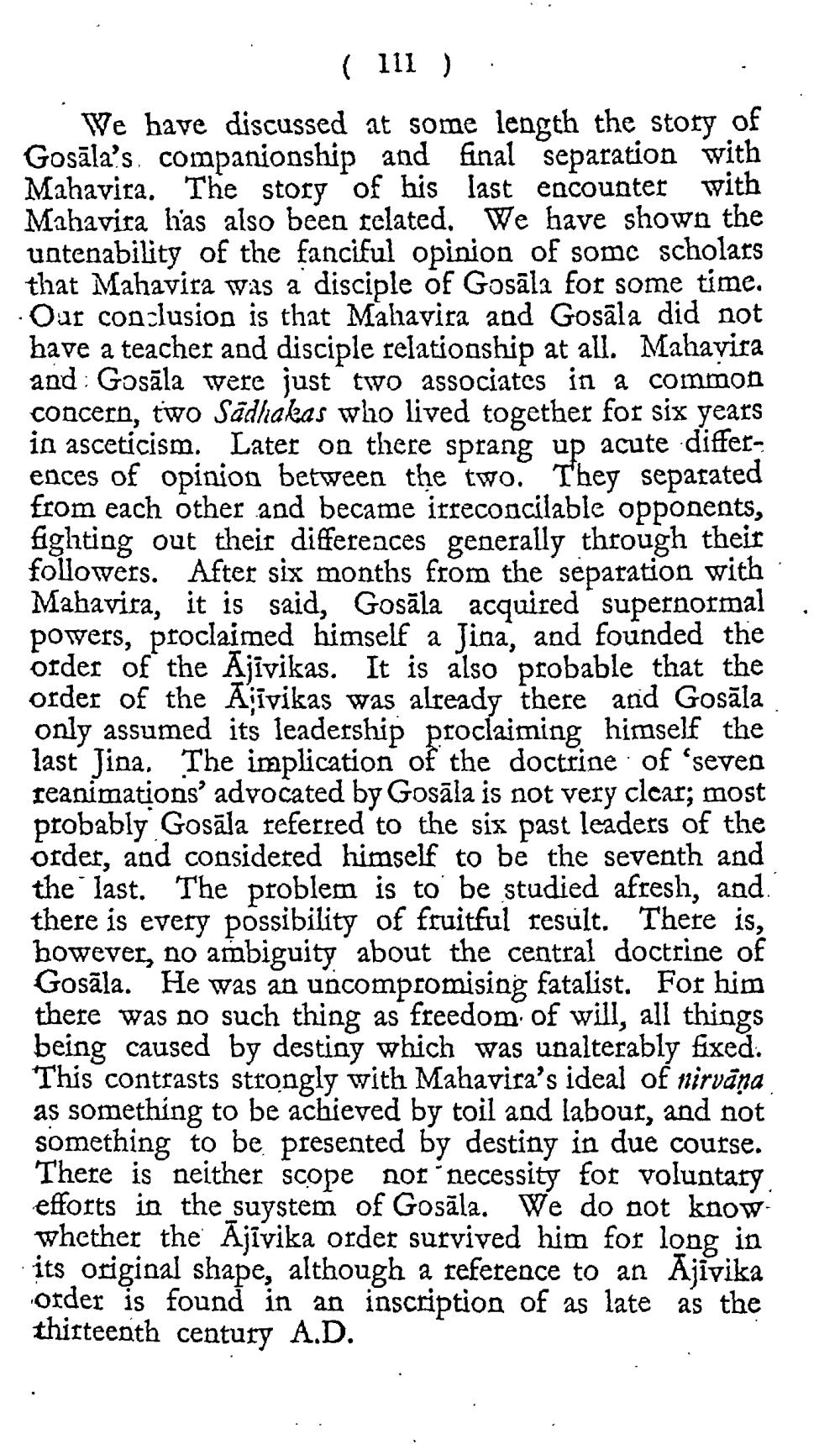________________
( 111 ) . We have discussed at some length the story of Gosāla's. companionship and final separation with Mahavira. The story of his last encounter with Mahavira has also been related. We have shown the uatenability of the fanciful opinion of some scholars that Mahavira was a disciple of Gosāla for some time. Our conclusion is that Mahavira and Gosāla did not have a teacher and disciple relationship at all. Mahavira and: Gosāla were just tvo associates in a common concern, two Sadhakas who lived together for six years in asceticism. Later on there sprang up acute differences of Opinion between the two. They separated from each other and became irreconcilable opponents, fighting out their differeaces generally through their followers. After six months from the separation with Mahavira, it is said, Gosāla acquired supernormal powers, proclaimed himself a Jina, and founded the order of the Ajivikas. It is also probable that the order of the Ajivikas was already there and Gosāla only assumed its leadership proclaiming himself the last Jina. The implication of the doctrine of 'seveo reanimations' advocated by Gosāla is not very clcar; most probably Gosāla referred to the six past leaders of the order, and considered himself to be the seventh and the last. The problem is to be studied afresh, and. there is every possibility of fruitful result. There is, however, no ambiguity about the central doctrine of Gosāla. He was an uncompromising fatalist. For him there was no such thing as freedom of will, all things being caused by destiny which was unalterably fixed. This contrasts strongly with Mahavira's ideal of nirvana as something to be achieved by toil and labour, and not something to be presented by destiny in due course. There is neither scope not necessity for voluntary efforts in the suystem of Gosāla. We do not knowwhether the Ajīvika order survived him for long in its original shape, although a reference to an Ajivika order is found in an inscription of as late as the thirteenth century A.D.




